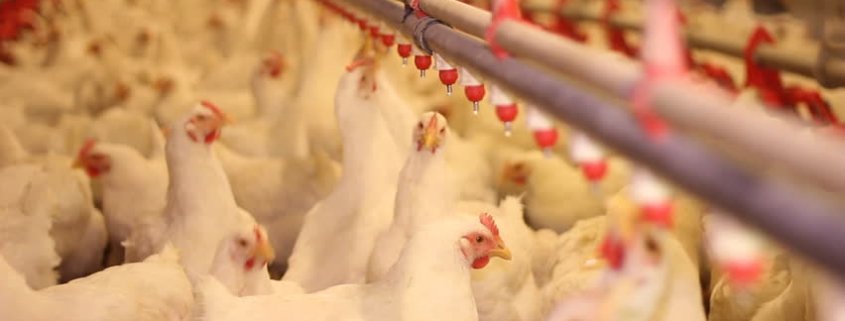Study: Reduction of Ammonia Emission in Chicken Farms by Improved Water Systems
Chuanwu Xi* , Liyan Song , Jianfeng Wu and Walter Bauer
Department of Environmental Health Sciences, University of Michigan School of Public Health, Ann Arbor, MI, USA and Bauer Energy Design Inc., Ontario, Canada
Background: Large scale and concentrated animal feeding operations have become the predominant method for modern animal husbandry to supply the market, but these operations lead to a number of adverse environmental problems. Ammonia production, the main contributor of livestock odor, often reduces the yield and increases operational costs on these farms.
At the same time, nitrogen loss of animal manure, attributed to the volatilization of NH4-N, reduces the manure fertilization strength and also causes environmental problems such as eutrophication. Water quality plays a very important role in the welfare of livestock in farms especially in the concentrated animal feeding operations.
Most of these farms commonly use well water to feed animals and polluted water in some of these wells could increase the spread of infections among animals on these farms. Together with air pollution, caused by ammonia and hydrogen sulphate emissions, often decreases the yield and overall health of livestock, and increases the mortality rate and operational costs on these farms.
We addressed this challenge by installing an improved water treatment system in a number chicken farms, which resulted in reduced chicken mortality, improved feed conversion and significant reduction of ammonia emission. This study focused on the study of mechanisms of the reduction of ammonia emissions via the change of chick gut microbiota by the improved water.
Methods: A water purification system consisting of a special Bauer Water Processor, chlorination, multi media filtration, membrane filtration, and UV disinfection was designed and installed in thirty farms in Canada, US and Europe by the Bauer Energy Design Inc. (BED). Ammonia emissions on the farms and uric acid in the chicken manure was monitored before and after the installations. Fresh manure was also collected and the structure and function of microbial community was determined using culturing, DNA pyrosequencing approaches and functional gene analysis.
Results: In the farms where the Bauer (BED) water purification systems are installed, the water purification system was effective in removing iron and other contaminants from well water. Visible biofilms were not observed on pipes and membranes in these systems. Animals fed with the treated water showed reduced occurrence of infections among animals in these farms. In one chicken farm in Canada, the loss of birds reduced from 3-5% to 0.5-2% annually due to infections after installing the system.
The feed conversion has been improved up to 14 percent. Indoor ammonia concentration was reduced from 60 ppm to about 2 ppm. Uric acid in the manures increased between 2.2 and 3.1 times. Culturing of aerobes and anaerobes in manure samples found a decreased ratio of anaerobes to aerobes. The samples also showed dramatically a reduction of uric acid utilization by bacteria in chickens fed with treated water, comparing to the manure sample of chickens fed with well water. DNA pyrosequencing and functional gene analysis found a dramatic change of microbial community in the gut. The relative abundance of key nitrogen cycling genes was altered by improved water especially the increase of gdh gene and decrease of urease gene.
Conclusions: The data showed that the improved water changed the structure and function of microbial community of the chicken guts, resulting in the reduction of ammonia emission.




